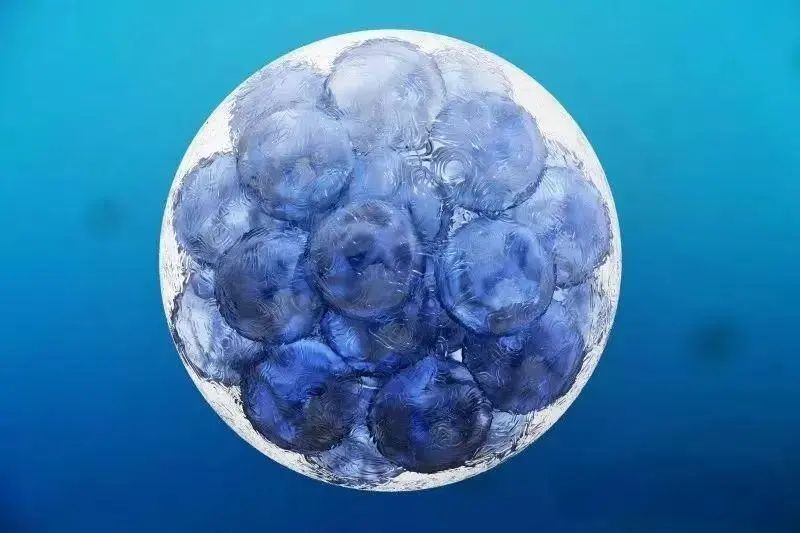Brain damage and neurological diseases are irreversible symptoms as far as science knows, and most neurodegenerative diseases and brain damage can cause dementia. With the advancement of stem cell technology, more research results have been published and found that the use of stem cell exosomes to improve the treatment of irreversible diseases such as brain damage, stroke, Parkinson's disease, and Alzheimer's disease has given hope to the treatment of neurodegenerative diseases.
In recent years, due to advanced age and chronic diseases, brain damage has become more and more serious. Various degrees of collisions, irregular living habits, high blood pressure, diabetes, drug abuse, long-term mental stress and mental illness are all possible factors that cause brain damage or degeneration.
China's aging status
By the end of 2023, the number of people aged 60 and above in China will be 296.97 million, accounting for 21.1% of the total population; the number of people aged 65 and above will be 216.76 million, accounting for 15.4% of the total population. As time goes by, the proportion of the elderly population continues to rise, showing that China is facing an increasingly serious problem of population aging.
Data shows that by 2050, the elderly population is expected to reach 480 million, accounting for about 35% of the total population, and the number of disabled and demented elderly people will reach hundreds of millions, becoming a major challenge that my country must face in the future.

In China, many doctors and scientists have been conducting clinical trials for many years and have accumulated considerable knowledge in the field of cell therapy, including terminal cancer, degenerative arthritis, chronic ischemic stroke, craniocerebral injury, spinal cord injury, large-area skin trauma, and sequelae of malignant tumors after surgery, radiotherapy, and chemotherapy, which can all be treated with cell therapy.
Take neurosurgery as an example. The use of stem cell therapy (G-CSF) can make bone marrow stem cells proliferate tenfold. The magnetic effect can attract stem cells to the brain to repair the injured part, and promote self-differentiation into brain nerves, blood vessels and other cells. Therefore, it helps brain injured patients recover quickly and protects nerves from necrosis due to ischemia caused by stroke. At the same time, it has anti-inflammatory effects and inhibits the inflammation of tissues and cells at the stroke site.
However, stem cells are living cells and must be implanted into the human body through surgery. If they cannot grow into the desired appearance through environmental control after implantation, complications may occur, and even tumors may develop. This is the biggest concern of cell therapy. Such concerns are expected to be eliminated in the future. The answer comes from stem cell exosomes.

What are stem cell exosomes
Exosomes are tiny vesicles secreted by cells, specifically vesicles with a diameter of 30-200nm, which are mainly responsible for the transport of substances and information between cells.
Exosomes contain protein rRNA and microRNA related to cell sources. Exosomes can directly activate receptor cells through cell membrane receptors, and can also transport proteins, mRNA, miRNA, lncRNA, circRNA, and even organelles into receptor cells to participate in intercellular communication. As an important signaling molecule, it forms a new cell-to-cell information transmission system that can participate in cell communication, cell migration, angiogenesis, and tumor cell growth.
In simple terms, we can imagine it as a bubble blown by stem cells. Its size is only nanometers. It is a tool for cells to communicate with the outside world. In the past, it was regarded as a waste product of cell metabolism.
In the process of culturing stem cells, stem cells will "spit bubbles" every day. After continuous observation, the bubbles spit out by stem cells are "exosomes". In fact, there are many active regenerative substances such as proteins and nucleic acids in the cell membrane, which can repair the missing functions of abnormal cells and have the ability to convert non-stem cells into stem cells.
Characteristics of exosomes
〈1〉Exosomes are very small and belong to the nanometer level:
The average size of exosomes is about 30-200nm, which belongs to the nanometer level. They are easily absorbed. Because they have a lipid bimolecular structure, they are more compatible with other cells.
〈2〉Responsible for intercellular transmission to achieve repair and regeneration:
One of the biggest functions of exosomes is to act as a "communicator" between cells. For example, when skin cells are abnormal, stem cells will release exosomes to convey the message of needing rescue to other cells, allowing healthy cells to help repair and regenerate.
〈3〉Can be stored in preparation to avoid related risks:
Compared to stem cells, which are difficult to culture and preserve, require surgical implantation, and cannot control the risk of growth after implantation, and have concerns about the formation of tumors, stem cell exosomes can be stored in preparations, injected into the blood or directly into the central nervous system by injection or nasal spray, and can easily pass through the blood-brain barrier and be easily absorbed by the human body. In addition, exosomes do not contain cells, so they will not proliferate in the human body and will not have the risk of promoting tumors, which is also a major advantage.
The role of exosomes
Exosomes are important carriers for communication between cells. Exosomes derived from microglia and neural stem cells can mediate inflammatory damage and play a neuroprotective role.
After brain injury, exosomes derived from microglia affect the proliferation and differentiation of neural stem cells through encapsulated proteins and nucleic acids. After brain injury, exosomes derived from neural stem cells can produce complex effects by communicating with microglia, such as inhibiting autophagy and promoting M2 microglia/macrophage polarization, significantly reducing the damaged area of cerebral infarction, etc. However, there is still no direct or clear mechanism for the mechanism by which exosome-encapsulated proteins and miRNAs affect microglia activation or neural stem cell proliferation/differentiation.






